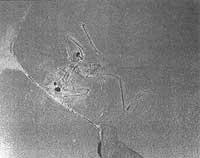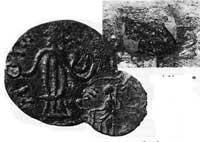Coins for Coins
1997/03/01 Irureta Azkune, Onintza Iturria: Elhuyar aldizkaria
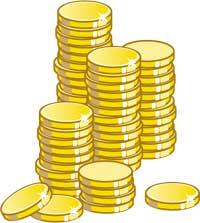
It is not difficult to explain what coins serve. We know perfectly. We bought and sold thanks to the coins. Throughout history, man has always acted in a kind of trade, but he has not always used the currency, let alone. Much later it occurred to the human being to use the coins.
The currency is based on exchange, since in exchange for the currency we receive something of the same value: food, clothes, labor supplies, etc. Human beings have reached an agreement to make the sale with coins. Hence the success of this exchange system.
It has been said that the same system has not always been used. Formerly no coins were used in exchange. In the Basque Country itself, until recently they have been used in the rural environment chickens, vegetables, eggs and oil. At least in the hamlet, the money was used very little in the hands and what they did not produce in the hamlet did in exchange for domestic products.
History of currency
In Europe and the Middle East almost 4,000 years ago they used something they had to make the currency: the copper bullion. Our ancestors bought in exchange for copper what they needed. In the year 700 BC the man dared to make the first coins. According to legend, in western Asia Minor, the first coin was celebrated in Lydia.
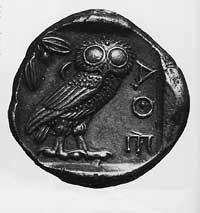
The technique used for the elaboration of the coin is for us significant, since currently the coins are made in a very similar way. Lydia's inventors chose gold to make coins. First they took the piece of gold and made it in small pieces, weighing each piece. The next step was to make round clay molds of little depth.
The pieces of gold penetrated to that depth and heated the gold. The molten gold covered the entire hollow of the clay mold. When the gold cooled it was extracted and each piece was placed on the anvil. The gold coin was sealed by the die. Some would have the image of the king or queen and others represented it. The aim of the seal was very important: it guaranteed the weight and purity of the gold. Although they began to use gold coins, trade with coins did not emerge. These gold coins are the first, but users did not realize the importance of the discovery.
Trade with currency begins in the second century BC. Thanks to the power of the Roman Empire, the currency quickly expanded through Europe. In addition to the gold coins, they began to make others of lesser value, such as silver and bronze.
While they were learning better and better the profession of making coins, many formed to make fake coins. Some counterfeiters made fake dies and with these molds made all the coins. Others took a real coin and prepared the mold; then they made the coins in that mold. In two ways, although the forger is very skillful, if we analyzed the coin well, it could be guessed that it was false.
How are coins made?
The process of making the coins is basically simple, but depending on the coin there are some steps that vary, sometimes adding and decreasing. The steps necessary to make the coins are:
- Casting: The currency materials currently used have very little value, since cheap metals are used.Both the metal chosen for the preparation of the coin and the slices of ingots used in the previous processes are introduced in the oven and the mixture melts in the oven. The cast metal is poured into the moulds to take shape of ingot.
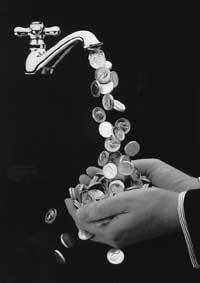 No coins come out with the open tap. However, we use the coin in our hands. The cards have also grown a lot lately and perhaps someday the coins will disappear, who knows!
No coins come out with the open tap. However, we use the coin in our hands. The cards have also grown a lot lately and perhaps someday the coins will disappear, who knows! - Lamination: the metal ingots pass between rollers in order to be laminated. The lamination reduces the volume of the ingots to achieve the necessary measure. They also cut the edges to the ingots. Sometimes the cutting and lamination are done after the heating of the ingots and in other cases in cold.
- Coils: the ingots lose shape in the following steps and the metal is collected in coils. The coils also receive a special treatment before converting the metal into currency.
- Shearing or cutting: as already explained, at the beginning of the process the edges of the ingots are cut to prepare the laminate. In this step, on the contrary, the metal tape of the coil acquires a form of currency. The truth is that you can't call currency to that piece of metal. It still has no stamp, but it already has a form of currency. Once the metal has taken the form of a coin, leftover metal pieces of lamination and cutting are transferred to the oven of the whole process.
- Seal: Seal: Seal: If we traveled to the store with the coin that has reached this step we would not see sweet faces. They are without seal and therefore without value. In this last step is sealed what until now has only been a piece of metal. The coin is ready for use.
At this time, globally, machine coins will be creating and creating coins. However, you cannot ensure that these machines continue to make coins for a long time. More and more cards of all kinds are used, and both these and the ticket can get rid of the coin. Perhaps soon we can’t sing “Txin-txin, txin-txin, the sound of money...”.

Gai honi buruzko eduki gehiago
Elhuyarrek garatutako teknologia




